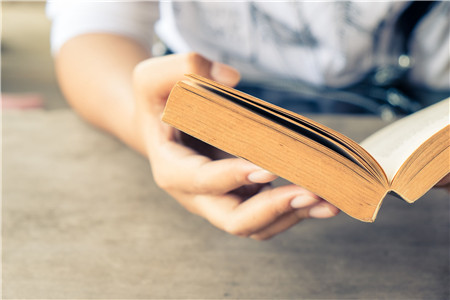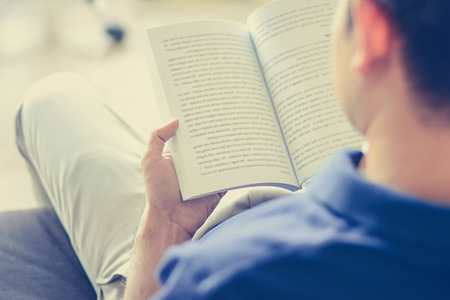官方真题Official48托福听力Lecture1原文+真题解析
- 2017年12月13日19:06 来源:小站整理
- 参与(0) 阅读(358615)
托福听力考试中包含2个Conversation和4个Lecture。对于很多考生来说,托福听力考试可能是整个托福考试当中比较难的一个考试部分。它们可能因为听不懂或者题型不够了解等等原因,使得成绩得不到提升。这里小编为大家整理的官方真题Official托福听力原文以及真题解析,希望可以帮助到大家。
官方真题Official48托福听力Lecture1练习>>>点击进入
官方真题Official48托福全套题目、解析、模板及范文汇总:http://toefl.zhan.com/官方真题Official64813.html
托福官方真题Official48听力lecture1听力原文:
Listen to part of a talk in an art history class.
Professor: So today we’re going to continue our discussion of 20th century photography in the United States. Last time we were talking about Alfred Stieglitz and we saw that one of his goals was to introduce Americans to European art. Today, we’re going to look at another photographer from the early 20th century. Yes, Jenifer?
Jenifer: Before we get to that, I had a question about Stieglitz. Well, Stieglitz was married to Georgia O’Keeffe, right?
Professor: That’s right. Stieglitz was married to her, promoted her work, and actually took some amazing portraits of her when they were married. For anyone who’s not familiar with this, we’re talking about the American painter Georgia O’Keeffe.
Jenifer: Okay. Well, I was wondering, Georgia O’Keeffe, You know, I’ve heard her name so many times and I’ve seen some of her work. But she’s not mentioned in any of our readings about photographers from that time.
Professor: Well, O’Keeffe was really more of a painter.
Jenifer: I thought she was a photographer, too. I mean, I just saw one of her photographs in a museum the other day. I think it was called Red Leaves on White or something like that.
Professor: Oh, right. Large Dark Red Leaves on White is the complete title. It’s a fairly well-known painting by O’Keefe.
Jenifer: Oh, okay. What was I thinking! I guess I should have had a closer look.
Professor: No. No. That’s a really good observation. I mean, chronologically that would be possible. When she did that painting, color film hadn’t even been invented yet, neither had the right technology to blow pictures up that big to show that much detail. But that painting and some of her other paintings do reveal the influence of photography, like she would crop her images. She would make a frame around part of an image, say just the very center, and then cut off certain parts, the parts outside that frame, to create the effect she wanted the way a photographer does. And those paintings are close-ups like you might see today of a person or a flower in a photograph.
Now, those techniques were certainly around and being used by photographers then but just in photographs, which were smaller, not as big as what O’Keefe, was painting. Also, O’Keeffe studied under an artist named Arthur Wesley Dow. That’s Dow, D-O-W, who advocated focusing on simple basic forms like the lines of a flower and its petals. And he wanted forms to be isolated from their original settings. He believed that by doing that, an artist could reveal an object’s, um, its essence. He would do things like have his students take a simple ordinary form like a leaf and explore various ways of fitting all of it into a square, maybe bending it around to make the whole thing fit into the frame. Peter?
Peter: It sounds like maybe O’Keefe borrowed most of her ideas, the stuff we might think of being hers. She just got them from other people. She didn’t really have a style of her own.
Professor: Well, virtually all artists are influenced by other artists, by their predecessors, by their contemporaries, their teachers. Artists build on what other artists have done. But if they’re talented, they take it in some unique direction to develop their own distinctive style. O’Keeffe liked to create abstract interpretations of real objects. In the painting Jenifer mentioned, Large Dark Red Leaves on White, in addition to exaggerating the size of the leaf, O’Keeffe juxtaposes it against a silver or whitish background so that’s more of an abstract setting for it and so on.
Now, O’Keeffe wasn’t the first artist to create an abstract interpretation of a real object, but she used that approach to express her experience of the object she was painting. So she presented a vision that people hadn’t seen before. It’s unique. It’s compelling. She didn’t expect other people to experience the object the way she did. She knew they’d look at her painting and hang their own associations on it, which is proof for artwork in general, I think. That’s just the way the human brain works. But at least they’d be taking a careful look at something they had never really paid much attention to.
官方真题Official48托福听力Lecture 1题目+解析
1.What aspect of Georgia O’Keeffe’s work do the speakers mainly discuss?
A.The kinds of objects that she selected for her paintings
B.The influence of her painting style on photography
C.The major abstract elements in her photographs
D.The techniques that contributed to her distinctive style
Q1
正确答案:D
定位原文:
But that painting and some of her other paintings do reveal the influence of photography…
Now, those techniques were certainly around and being used by photographers then but just in photographs, which were smaller, not as big as what O’Keefe, was painting…
But that painting and some of her other paintings do reveal the influence of photography, like she would crop her images … like you might see today of a person or a flower in a photograph…
Now, O’Keeffe wasn’t the first artist to create an abstract interpretation of a real object, but she used that approach to express her experience of the object she was painting.
解析:学生全程跟professor聊O’Keefe,先说了她更倾向于是个painter而非photographer,她的画作显示了受到了photography的影响,然后讲述她创作的方法,拜师后形成了自己的风格手法,将真实的事物抽象化表达,作品呈现出摄影特写的特征。结合选项,选择D。
2.According to the professor, what characteristics of Large Dark Red Leaves on White indicate that it could not be a photograph? Click on 2 answers.
A.It depicts leaves in a setting that appears to be abstract.
B.It is larger than most photographs of the time.
C.It shows less realistic detail than a photograph does.
D.It included colors that could not have been reproduced in a photograph.
Q2
正确答案:B D
定位原文:
When she did that painting, color film hadn’t even been invented yet, neither had the right technology to blow pictures up that big to show that much detail.
Now, those techniques were certainly around and being used by photographers then but just in photographs, which were smaller, not as big as what O’Keefe, was painting.
解析:在O’Keefe创作那副作品时,彩色胶片还没有被发明,所以还没有技术去放大画图,展示更多的细节,这点对应D;which were smaller, not as big as what O’Keefe, was painting—对应B选项。
3.According to the professor, what principles did Arthur Wesley Dow emphasize in his art classes? Click on 2 answers.
A.Focusing on simple forms
B.Using color to reveal the essence of an object
C.Separating a form from its natural surroundings
D.Exaggerating the size of a form
Q3
正确答案:A C
定位原文:
Also, O’Keeffe studied under an artist named Arthur Wesley Dow. That’s Dow, D-O-W, who advocated focusing on simple basic forms like the lines of a flower and its petals. And he wanted forms to be isolated from their original settings.
解析:原文中的focusing on simple basic forms 和A选项相互对应;forms to be isolated from their original settings 和C选项对应,setting 和选项中的surroundings 属于同义表达。
4.In his discussion of O’Keeffe’s style, why does the professor describe Large Dark Red Leaves on White?
A.To give an example of a painting that was copied from a photograph
B.To give an example of an abstract interpretation of real objects
C.To point out that some of O’Keeffe’s subjects were represented in their natural setting
D.To point out the similarities between O’Keeffe’s works and works of other artists
Q4
正确答案:B
定位原文:
O’Keeffe liked to create abstract interpretations of real objects. In the painting Jenifer mentioned, Large Dark Red Leaves on White, in addition to exaggerating the size of the leaf, O’Keeffe juxtaposes it against a silver or whitish background so that’s more of an abstract setting for it and so on.
解析:在professor描述Large Dark Red Leaves on White这个作品之前,说到She liked to create abstract interpretations of real objects.相当于提出一个观点,然后举例论证了一下,abstract interpretations of real objects在原文重现,对应B选项。
5.According to the professor, what effect did O’Keeffe expect her paintings to have on viewers?
A.The paintings would create the same personal associations as they did for O’Keeffe.
B.The paintings would make people see ordinary things in a new way.
C.The paintings would mistakenly be seen as photographs.
D.The paintings would inspire an appreciation for nature.
Q5
正确答案:B
定位原文:
Now, O’Keeffe wasn’t the first artist to create an abstract interpretation of a real object, but she used that approach to express her experience of the object she was painting. So she presented a vision that people hadn’t seen before. It’s unique. It’s compelling. She didn’t expect other people to experience the object the way she did. She knew they’d look at her painting and hang their own associations on it, which is proof for artwork in general, I think.
解析:原文说到O’Keeffe 用自己的绘画手法来表达自己特有的对事物的体验,这种视角之前人们是没有看到过的,但她并不期待其他人能够体会她对所创作画作的事物能有一样的体验,她知道看画的人肯定带有自己的联想。也就是人们会又以新的角度对写实事物的画作进行欣赏,对应B选项。
6.Why does the professor say this:
A.To emphasize a point that he made earlier about O’Keeffe’s works
B.To emphasize that the student should have observed the painting more closely
C.To indicate that the student’s conclusion about O’Keeffe was not foolish
D.To indicate that he had not understood the student’s point about the painting
Q6
正确答案:C
定位原文:
Jenifer: I thought she was a photographer, too. I mean, I just saw one of her photographs in a museum the other day. I think it was called Red Leaves on White or something like that.
Professor: Oh, right. Large Dark Red Leaves on White is the complete title. It’s a fairly well-known painting by O’Keefe.
Jenifer: Oh, okay. What was I thinking! I guess I should have had a closer look.
Professor: No. No. That’s a really good observation.
解析:学生说我还以为她是个photographer呢,因为之前在博物馆里看到了一副她的作品(此时默认这个作品是photograph,其实是painting),然后学生说了一个自己凭借印象的模糊的名字,professor纠正了她,说了正确的名字,还说是个非常有名的painting,学生以为自己连作品是painting还是photograph这个问题都没有看出来,觉得错的很不好意思,老师说,不不,你观察的很好。老师之所以这么说,是因为后文阐述了O’Keefe的画作的确有摄影作品的风格特征,恰恰说明了学生的观察和判断是很有代表性的,所以对应C选项,不是A选项,不是其他。
以上就是小编为大家整理的官方真题Official48托福听力真题解析及听力原文,大家在托福听力备考时可以拿来进行参考,希望可以帮助到大家。最后,小编预祝大家托福考试能取得理想的成绩。
本文部分内容来源于互联网,如有疑问请联系小站管理员进行删除。






























